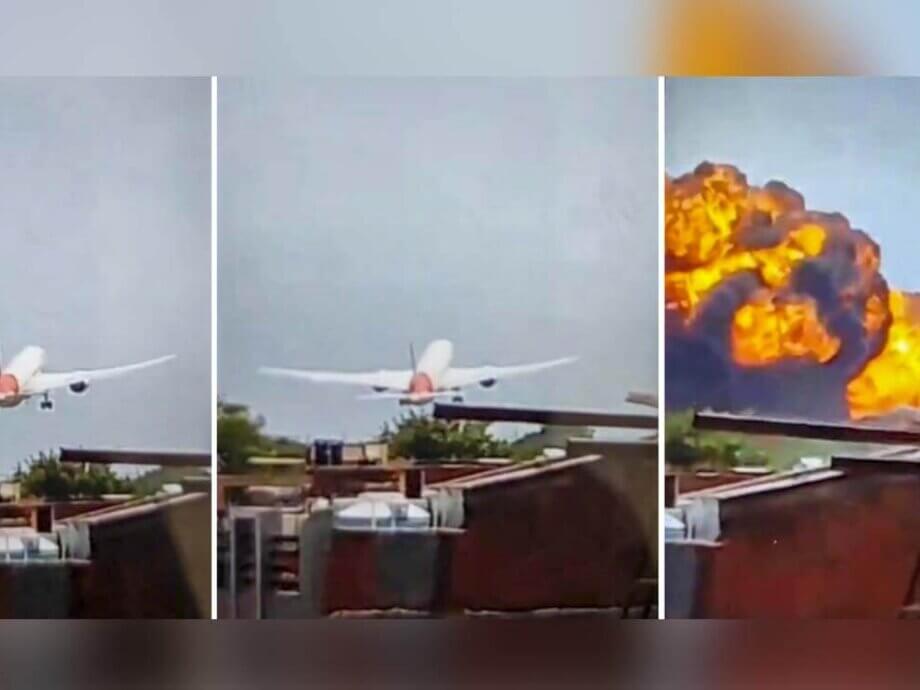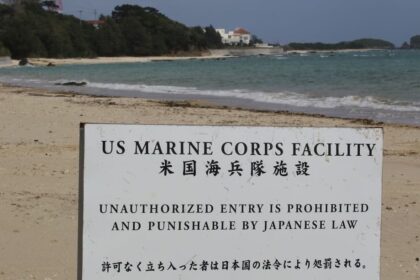Catastrophe in Ahmedabad: Air India Flight AI171 Crash
On June 12, 2025, tragedy struck the Indian city of Ahmedabad when Air India Flight AI171, a Boeing 787-8 Dreamliner bound for London Gatwick, crashed into a densely populated residential area just minutes after takeoff. The disaster claimed the lives of at least 241 people on board and several on the ground, marking the deadliest aviation accident in India in nearly three decades and the first fatal crash involving a Boeing 787 Dreamliner since the aircraft entered commercial service in 2011.
- Catastrophe in Ahmedabad: Air India Flight AI171 Crash
- What Happened: Timeline and Immediate Aftermath
- Survivor’s Story: A Miracle Amidst Tragedy
- Victims and Nationalities: A Global Tragedy
- Rescue, Recovery, and Identification Efforts
- Investigation: Searching for Answers
- The Boeing 787 Dreamliner: Safety Record and Scrutiny
- Air India and Indian Aviation: Growth and Challenges
- Global Response: Condolences and Support
- Eyewitness Accounts and Human Impact
- What Comes Next: Investigation and Industry Implications
- In Summary
The crash has sent shockwaves through the global aviation community, raised urgent questions about aircraft safety, and left families across multiple continents in mourning. As investigations continue, the world watches for answers and accountability.
What Happened: Timeline and Immediate Aftermath
Flight AI171 departed from Sardar Vallabhbhai Patel International Airport in Ahmedabad at 1:38 p.m. local time, carrying 230 passengers and 12 crew members. The aircraft was scheduled to land at London’s Gatwick Airport later that evening. Within five minutes of takeoff, the plane issued a “Mayday” distress call, signaling an emergency. Moments later, it crashed into the doctors’ hostel of B.J. Medical College, a building adjacent to the airport, during the busy lunch hour.
Eyewitnesses and CCTV footage confirmed the aircraft was flying unusually low, with its landing gear down, before it disappeared behind buildings and a massive fireball erupted. The impact split the plane in two and ignited a fierce blaze, complicating rescue efforts. The tail of the aircraft was left lodged atop the hostel building, and debris was scattered across the area.
Rescue teams, including local firefighters, police, and Indian Army personnel, rushed to the scene. The fire was eventually brought under control, but the devastation was immense. Many bodies were charred beyond recognition, necessitating DNA testing for identification. The crash also killed at least five medical students and injured dozens more who were in the hostel at the time.
Survivor’s Story: A Miracle Amidst Tragedy
Amid the overwhelming loss, a single story of survival emerged. Vishwash Kumar Ramesh, a 40-year-old British national of Indian origin, was seated in 11A, next to an emergency exit. He recounted his harrowing experience from his hospital bed:
“Thirty seconds after take-off, there was a loud noise and then the plane crashed. It all happened so quickly. When I got up, there were bodies all around me. I was scared. I stood up and ran. There were pieces of the plane all around me. Someone grabbed hold of me and put me in an ambulance and brought me to the hospital.”
Ramesh, who was traveling with his brother, survived with multiple injuries but was reported to be out of danger. His account has provided investigators with crucial firsthand information about the moments leading up to the crash.
Victims and Nationalities: A Global Tragedy
The passenger manifest reflected the international nature of the flight:
- 169 Indian nationals
- 53 British nationals
- 7 Portuguese nationals
- 1 Canadian national
Among the victims were prominent figures, including Vijay Rupani, the former Chief Minister of Gujarat. The crash also claimed the lives of entire families and medical students, compounding the sense of loss in both India and abroad. The UK, Portugal, and Canada have all confirmed the deaths of their citizens and are working with Indian authorities to support affected families.
Rescue, Recovery, and Identification Efforts
Rescue operations continued into the night and the following day, with more than 90 emergency workers deployed at the site. The Indian Army provided additional support, and local hospitals were inundated with casualties and grieving relatives. The scale of the disaster made identification of victims challenging, as many bodies were badly burned. Authorities called on families to provide DNA samples to aid in the process.
Officials confirmed that at least 265 bodies had been recovered and transported to Ahmedabad’s Civil Hospital. The final death toll is expected to include both passengers and people on the ground. The Ministry of Civil Aviation, Air India, and local police set up hotlines for families seeking information.
Investigation: Searching for Answers
The cause of the crash remains under investigation. India’s Aircraft Accident Investigation Bureau (AAIB) is leading the probe, with support from international agencies including the U.S. National Transportation Safety Board (NTSB), the UK’s Air Accidents Investigation Branch (AAIB), and technical teams from Boeing and GE Aerospace (the engine manufacturer).
One of the aircraft’s black boxes (flight data recorder) has been recovered, and the search continues for the cockpit voice recorder. These devices are critical for reconstructing the flight’s final moments and understanding what went wrong.
Early analysis of video footage and flight data has raised questions among aviation experts. The aircraft appeared to be descending with its nose up and landing gear down—an unusual configuration for a plane that should have been climbing after takeoff. Weather conditions were reported to be clear, and both the captain and co-pilot had significant flying experience.
Investigators are considering multiple possibilities, including mechanical failure, pilot error, or a combination of factors. The Dreamliner’s safety record had been exemplary until this incident, with no previous fatal crashes or hull losses since its introduction.
The Boeing 787 Dreamliner: Safety Record and Scrutiny
The Boeing 787 Dreamliner is a state-of-the-art, long-haul aircraft known for its fuel efficiency, advanced materials, and passenger comfort. Over 1,100 Dreamliners are in service worldwide. Until the Ahmedabad crash, the model had never been involved in a fatal accident.
However, the Dreamliner has faced technical challenges in the past, including battery fires and engine issues that led to temporary groundings and operational disruptions. In 2024, a Boeing engineer raised concerns about the structural integrity of the 787’s fuselage, alleging that improperly fastened sections could pose long-term risks. Boeing and the U.S. Federal Aviation Administration (FAA) stated that there was no immediate safety threat, but the claims added to ongoing scrutiny of Boeing’s manufacturing and quality control processes.
The crash of Flight AI171 has reignited debate about Boeing’s safety culture, especially in the wake of two fatal 737 Max crashes in 2018 and 2019, and a series of high-profile incidents involving other Boeing models. Shares of Boeing, GE Aerospace, and key suppliers fell sharply in the aftermath of the Ahmedabad disaster, reflecting investor anxiety and renewed calls for regulatory oversight.
Air India and Indian Aviation: Growth and Challenges
India’s aviation sector has experienced rapid growth in recent years, becoming the world’s fourth-largest air market. Air India, the country’s flagship carrier, was privatized in 2022 when it was acquired by the Tata Group. The airline has since embarked on an ambitious turnaround plan, including major aircraft orders from both Boeing and Airbus.
Despite improvements, India’s aviation industry has a history of tragic accidents. The last major crash occurred in 2020, when an Air India Express flight skidded off a runway in Kerala, killing 21 people. The deadliest crash in Indian history was a mid-air collision near New Delhi in 1996, which killed 349 people.
Air India’s safety record is generally comparable to other major international carriers, but the Ahmedabad crash is a stark reminder of the risks inherent in aviation and the need for constant vigilance.
Global Response: Condolences and Support
The crash prompted an outpouring of grief and solidarity from leaders and organizations around the world. Indian Prime Minister Narendra Modi, whose home state is Gujarat, expressed his sorrow:
“The tragedy in Ahmedabad has stunned and saddened us. It is heartbreaking beyond words. In this sad hour, my thoughts are with everyone affected by it. Have been in touch with Ministers and authorities who are working to assist those affected.”
British Prime Minister Keir Starmer, U.S. President Donald Trump, King Charles III, and leaders from Portugal, Canada, Malaysia, Bangladesh, and Pakistan all issued statements of condolence and pledged support for the investigation and relief efforts. The Tata Group, owner of Air India, activated emergency centers and support teams for families of the victims, and announced financial assistance for those affected.
Eyewitness Accounts and Human Impact
Survivors, witnesses, and families have shared harrowing stories from the crash and its aftermath. Medical students at B.J. Medical College described how the plane struck the dining hall during lunch, trapping some students in the fire. One mother recounted her relief after learning her son had survived by jumping from the second floor, though he suffered injuries.
Relatives of passengers gathered at hospitals and airports, desperate for news. Many expressed frustration at the lack of timely information, as authorities worked to confirm identities and notify next of kin. The emotional toll has been profound, with entire communities mourning the loss of loved ones.
What Comes Next: Investigation and Industry Implications
The official investigation is expected to take months, if not longer. The recovery of both black boxes will be crucial for determining the sequence of events and identifying any technical or human failures. International teams from the U.S., UK, and other countries are collaborating with Indian authorities to ensure a thorough and transparent process.
The crash has already had ripple effects across the aviation industry. Boeing’s CEO canceled plans to attend the Paris Air Show, and GE Aerospace postponed investor events. Airlines and regulators worldwide are closely monitoring the investigation for any implications that could affect the Dreamliner fleet or broader safety protocols.
For Air India and the Tata Group, the tragedy is a severe test of crisis management and corporate responsibility. The airline’s response, support for families, and cooperation with investigators will be scrutinized in the months ahead.
In Summary
- Air India Flight AI171, a Boeing 787-8 Dreamliner, crashed in Ahmedabad on June 12, 2025, killing at least 241 people on board and several on the ground.
- The crash is the first fatal accident involving a Boeing 787 Dreamliner since its introduction in 2011.
- The sole survivor, Vishwash Kumar Ramesh, provided a firsthand account of the disaster.
- Victims included nationals from India, the UK, Portugal, and Canada, as well as prominent figures and medical students.
- Rescue and identification efforts are ongoing, with DNA testing required for many victims.
- Investigations are underway, with international agencies assisting; early evidence points to an unusual descent and possible technical or human factors.
- The crash has reignited scrutiny of Boeing’s safety practices and impacted global aviation markets.
- World leaders and the aviation community have expressed condolences and support for the victims and their families.
- The tragedy underscores the importance of rigorous safety standards and transparent investigations in the aviation industry.












